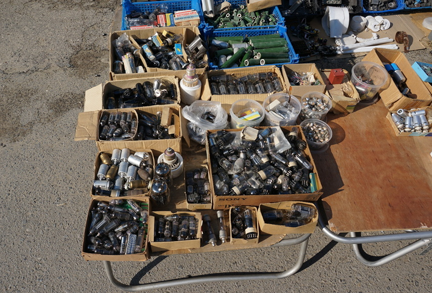We like models of complex phenomena. If we are academics, we may spend considerable time creating models and arguing for the benefits of our model versus competing models. It is cool to be recognized as the creator of a given popular model. You might be paid to explain your model at conferences or through a book. My wife and I had a discussion recently about two models many involved in educational technology may recognize – TPACK and SAMR. I have no idea why models are presented as abbreviations but the acronyms are short for Technological, Pedagogical, Content Knowledge (TPACK) and substitution, augmentation, modification, redefinition (SAMR). Looking at these labels written out, I guess I have answered my own question regarding the acronyms. Neither the short nor full version has an obvious meaning.
Anyway, our discussion concerned whether future educators should be “taught” these models. What might be the benefit of taking time to present, study, and evaluate understanding of such models for a future or practicing teacher? She was not an advocate of presenting such models to her students.
I have continued to think about this topic, because I recognize that I use models (not the models I mentioned) in my own class. For example, I spend time presenting and explaining the cognitive information processing model (including updates that identify various long term memory structures) in my educational psychology courses. Why? I think understanding this model helps explain issues that teachers face. For example, students who struggle with word recognition are likely to have poor comprehension because the focus on word recognition is using up the capacity available in working memory. While word recognition can be developed in various ways, comprehension is unlikely to improve until the more basic skill has been improved. Students with poor background knowledge will find it difficult to “understand” content. Effective long term memory depends not just on storage, but also on the development of links with existing knowledge. etc. etc. Models can help us understand phenomena we must deal with and suggest possible sources of action.
So in thinking about models, I propose advocates consider the following questions:
- What kind of a model is this? – descriptive, causal
- What does the model predict and has the prediction been tested?
- Who would most benefit from knowing and understanding this model?
I probably cannot speak for those who have spent great amounts of time devoted to SAMR or TPACK, but I have opinions.
What kind of a model?
SAMR seems descriptive. TPACK seems more causal.What is predicted?
TPACK seems to predict how teachers end up using technology in their classrooms. It is suggested that various types of knowledge are required to use technology in given ways. Has this been tested? I do not really know. I also may now disagree with my claim that this model is causal. This would assume that the development of a specific type of knowledge would lead to a different classroom practice. I am guessing data that exists does not yet demonstrate this forward linkage – perhaps I am wrong.Who benefits?
I think I agree with my wife. I see little present benefit to teachers in spending much time with these models. I see those of us who prepare teachers finding possible benefit in the models? Are these models accurate descriptions? Can predictions based on those models be tested? What curriculum modifications might be implemented if we want teacher classroom behavior to change? What knowledge and skills should be emphasized?
![]()


You must be logged in to post a comment.